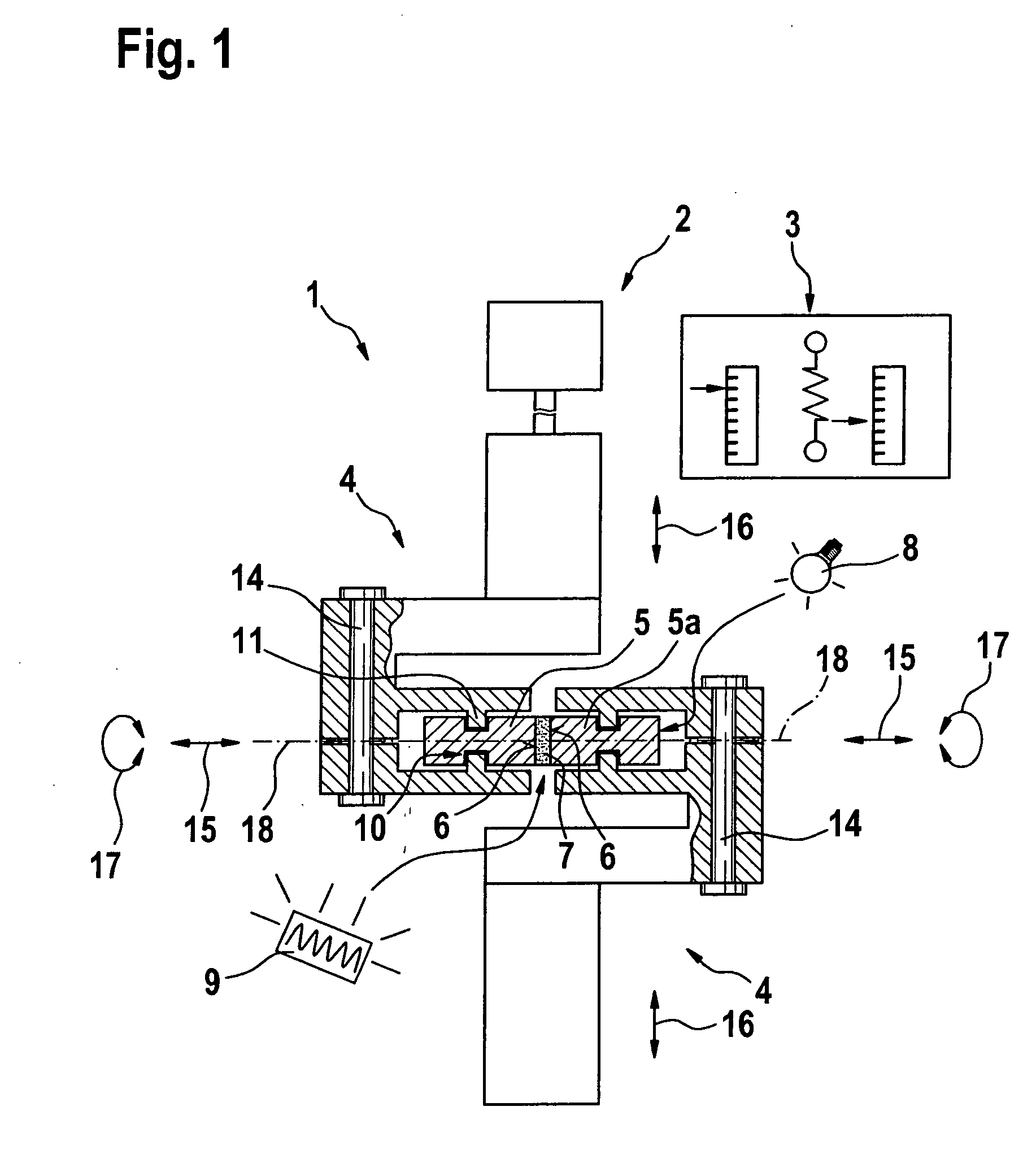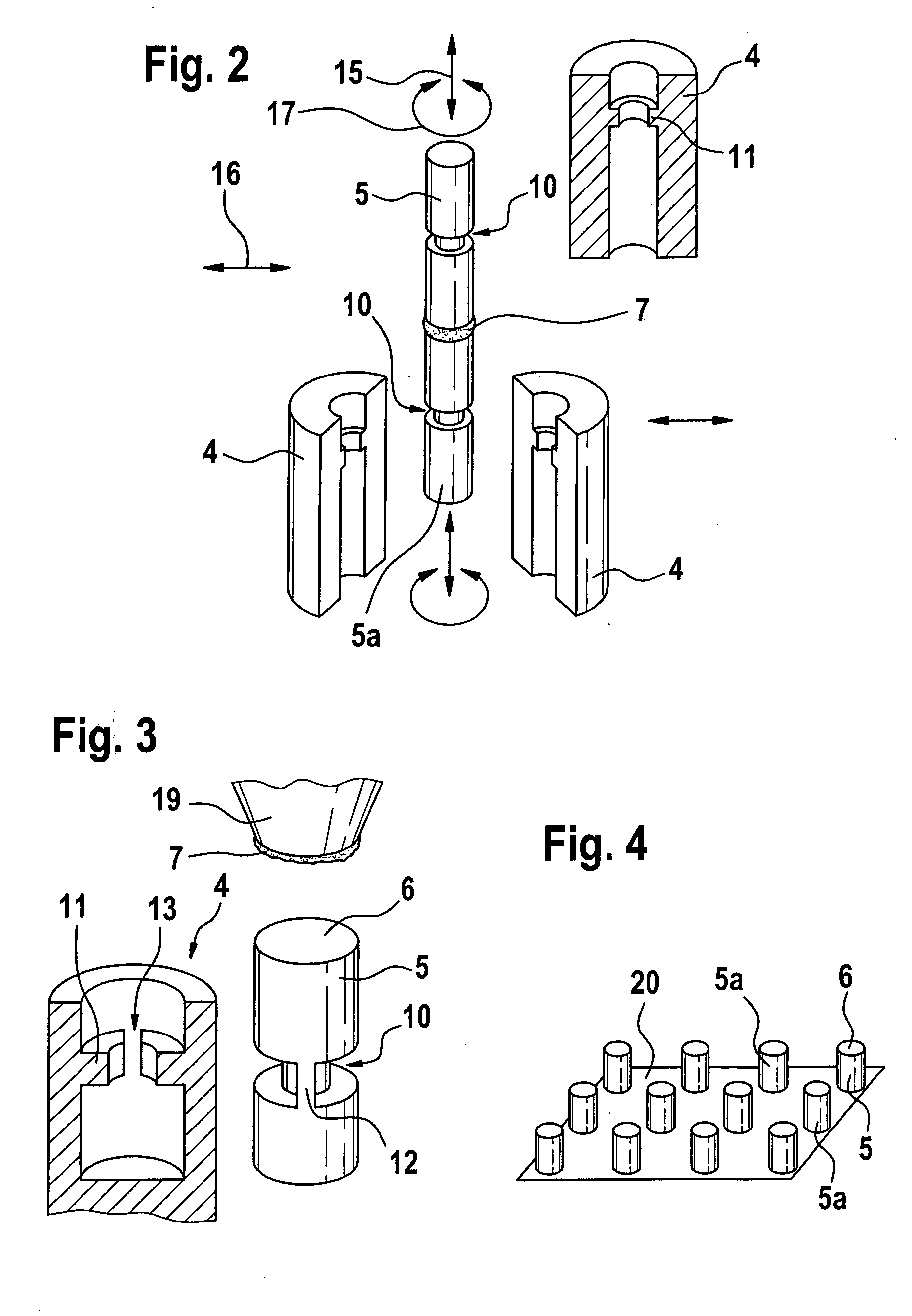Device for testing material properties with regard to combined tensile and shear loads, in particular for testing adhesives
a technology of combined tensile and shear load and test piece, which is applied in the direction of individual semiconductor device testing, instrumentation, mechanical means, etc., can solve the problems of high oscillation, unambiguous conclusion of adhesive's tensile properties, and high friction of test piece, so as to achieve accurate material properties of adhesive and high oscillation
- Summary
- Abstract
- Description
- Claims
- Application Information
AI Technical Summary
Benefits of technology
Problems solved by technology
Method used
Image
Examples
Embodiment Construction
[0026]FIG. 1 shows a device 1 for testing material properties with regard to combined tensile and shear loads, in particular for testing adhesives. This device has a device 2 for applying the force and a measuring device 3. Test pieces 5, 5a are fixed on device 1 via test piece receptacles 4. Bonding surfaces 6 are formed on the front faces of the test pieces and are bonded by adhesive 7 to be tested.
[0027] Test pieces 5, 5a are made of a material permeable to electromagnetic waves, so that the electromagnetic waves exiting from the respective sources are able to act on the adhesive to be tested from each side. A UV light source 8 and, as another example, a heat source 9 are depicted as sources. Depending on the embodiment, the source for heat supply may be situated directly in the area of the joint or at a suitable radiation entry point for the UV light. A properly conducting connection from the respective source to the joint or to the wave entry point may also be present, so that...
PUM
 Login to View More
Login to View More Abstract
Description
Claims
Application Information
 Login to View More
Login to View More - R&D
- Intellectual Property
- Life Sciences
- Materials
- Tech Scout
- Unparalleled Data Quality
- Higher Quality Content
- 60% Fewer Hallucinations
Browse by: Latest US Patents, China's latest patents, Technical Efficacy Thesaurus, Application Domain, Technology Topic, Popular Technical Reports.
© 2025 PatSnap. All rights reserved.Legal|Privacy policy|Modern Slavery Act Transparency Statement|Sitemap|About US| Contact US: help@patsnap.com



